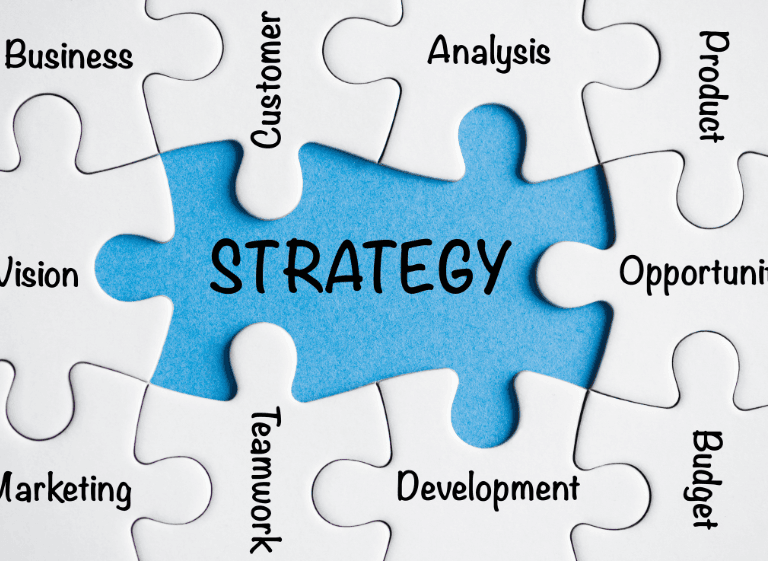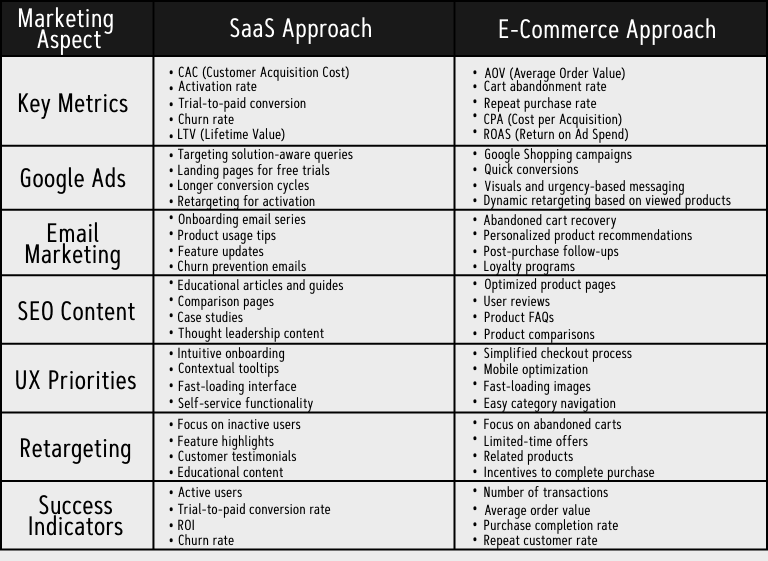Marketing strategies
E-Commerce Solutions
SaaS marketing
SEO optimization
Data analytics
Best Marketing Strategies for SaaS & E-Commerce: How to Maximize ROI & Boost Conversions
Nadiia Sidenko
2025-03-21
What works in SaaS can fall flat in e-commerce — and vice versa. Yet many businesses still run marketing campaigns as if one strategy fits all. The result? Wasted ad spend, low conversions, and a funnel that looks good on paper but doesn’t perform in practice.

In this article, you’ll find practical insights on how to align your marketing efforts with the logic of your business model — whether you're building a subscription-based SaaS product or running an online store. We’ll explore ad strategy, email automation, SEO-driven content, and UX improvements that actually move the needle. This is not a tutorial. It’s your shortcut to understanding what works — and where expert help can save you time and budget.
SaaS vs. E-Commerce: One Funnel Doesn’t Fit All
SaaS is built on long-term user relationships — sign-ups, activation, retention, and upsells. E-commerce thrives on fast conversions — optimized checkouts, product visibility, and customer lifetime value through loyalty.
If your SaaS platform is applying urgency-based messaging or discount-driven offers like an online shop, it might be pushing the wrong emotional buttons. If your store is offering complex onboarding emails or free demos, you're likely losing impatient buyers.
This distinction affects everything from your advertising approach to how you write landing page copy. The sooner your strategy reflects these behavioral patterns, the faster your ROI improves.
To better understand these fundamental differences between SaaS and e-commerce marketing approaches, let's examine a side-by-side comparison. The table below highlights the key distinctions in metrics, advertising strategies, email marketing, content priorities, and other critical elements. By identifying which column aligns with your business model, you can quickly pinpoint where your current marketing efforts might be misaligned—and where simple adjustments could significantly improve your results.

Smart Google Ads & Retargeting by Business Type
In SaaS, people don’t just “buy” — they compare, evaluate, and test. Your Google Ads should reflect that. Instead of generic keyword targeting, focus on solution-aware queries like “CRM for remote teams” or “automated reporting tool for finance.” Direct traffic to clean landing pages that offer free trials or product demos — not just features.
Meanwhile, e-commerce thrives on clarity and speed. Use Google Shopping ads with optimized feeds, high-quality images, and real-time inventory. Pair that with urgency messaging like “Only 3 left in stock” or “20% off today.”
Retargeting logic also varies:
- SaaS: Re-engage visitors who dropped off before activation. Use dynamic ads showcasing features or customer testimonials.
- E-commerce: Bring back users who abandoned carts or viewed specific products. Combine this with personalized offers or limited-time deals.
The success of these strategies is amplified when SEO and PPC efforts work together — reducing costs and increasing qualified traffic.
Email Automation That Supports Conversion
If you’re sending one-size-fits-all email blasts, you're missing massive revenue.
For SaaS, email sequences should guide users through the product: onboarding emails, usage tips, and feature-based nudges to convert trials into subscriptions. These flows also reduce churn by proactively supporting activation. You don’t need to reinvent the wheel — most high-performing flows follow a proven structure, which experienced marketing teams can tailor and automate for you.
In e-commerce, email plays a different role:
- Recover abandoned carts
- Deliver personalized product suggestions
- Encourage reviews and repeat purchases post-checkout
Each touchpoint can be optimized using performance analytics tools to track what actually drives revenue.
SEO-Optimized Content That Converts, Not Just Attracts
Content is not a blog for blog’s sake — it’s a long-term growth channel.
SaaS companies should build libraries of how-to guides, comparison pages, and solution-focused blog posts. These assets reduce CAC, improve trial quality, and position your brand as an expert. For a practical blueprint, explore this guide by Ahrefs — it outlines proven strategies used across the SaaS industry. Strong content also reduces reliance on ads and supports SEO across the entire funnel. To see how paid and organic channels complement each other, review this article on SEO & PPC alignment.
For e-commerce, content starts on product pages. Use original descriptions, customer Q&A, optimized images with alt tags, and structured data to boost search visibility and conversion. High-performing pages blend clarity, relevance, and searchability.
If you're wondering whether your content converts, check bounce rates, time on page, and whether it naturally leads users to take action.
Don’t Let UX Undermine Your Strategy
Users won’t convert if the experience is frustrating — no matter how good your marketing is.
SaaS platforms need intuitive onboarding, fast-loading interfaces, and contextual tooltips. E-commerce needs clean navigation, easy filtering, and a checkout that works flawlessly on mobile.
Your visual hierarchy should guide the user’s eye from benefit to CTA — not confuse them with competing design elements. To dig deeper into UX fundamentals, explore why great design drives business growth.
Also, don’t overlook speed. Use image optimization strategies to keep load times under 2 seconds — or risk losing visitors before they even see your product.
New Trends Worth Adopting
Today’s users expect more than the basics. Here’s what’s working now:
- AI personalization: Product recommendations, dynamic email content, and chatbots that actually help — not annoy
- Predictive analytics: Anticipate what your users need based on behavior
- Privacy-aware UX: Especially important in SaaS with sensitive data — transparency wins trust
These aren’t future trends — they’re already shaping how customers evaluate your platform or store.
Real-World Scenarios: Strategy in Action
SaaS Example
Imagine a SaaS platform that offers project collaboration tools. Users sign up but drop off before completing activation. By publishing a blog series that addresses common onboarding challenges, aligning Google Ads with these articles, and setting up a retargeting flow for inactive users, the company builds a smoother activation funnel. Over time, they begin to see a more engaged user base and higher trial-to-paid conversion — not because they changed the product, but because they improved the experience around it.
E-Commerce Example
Picture a mid-sized electronics store with high cart abandonment. After implementing a basic cart recovery email sequence and launching dynamic retargeting ads tied to specific products, they start bringing back hesitant shoppers. They also notice an increase in order value when combining recovery emails with post-purchase upsell suggestions.
These are common marketing scenarios — not one-off miracles. They show what’s possible when your strategy matches how users actually make decisions.
Checklist: How to Align by Business Type
For SaaS:
- Target solution-specific keywords in ads
- Build onboarding and feature education email flows
- Use retargeting to re-engage trial users
- Invest in blog content that solves user pain points
- Optimize UX around user activation
For E-Commerce:
- Run Google Shopping and dynamic retargeting
- Recover abandoned carts with timed emails
- Enhance product pages with schema and reviews
- Send personalized recommendations post-purchase
- Improve site speed and mobile usability
Want to turn strategy into execution?
If you’re working on a SaaS or e-commerce project and looking to improve your marketing infrastructure — from automated email flows to conversion-focused UX — our team at Pinta WebWare can support your growth. We help businesses build scalable systems, not just campaigns.

Final Thoughts
Growth Comes from Alignment, Not Overwork
You don’t need to manage every detail alone — but knowing where to focus can unlock real progress. Whether you’re optimizing your funnel, refining your email flows, or struggling with traffic that doesn’t convert, expert guidance helps reduce guesswork and accelerate results.
For SaaS and e-commerce teams, aligning your marketing strategy with how users actually think and behave isn’t just helpful — it’s essential. Once that alignment clicks, growth stops being accidental and starts being intentional.